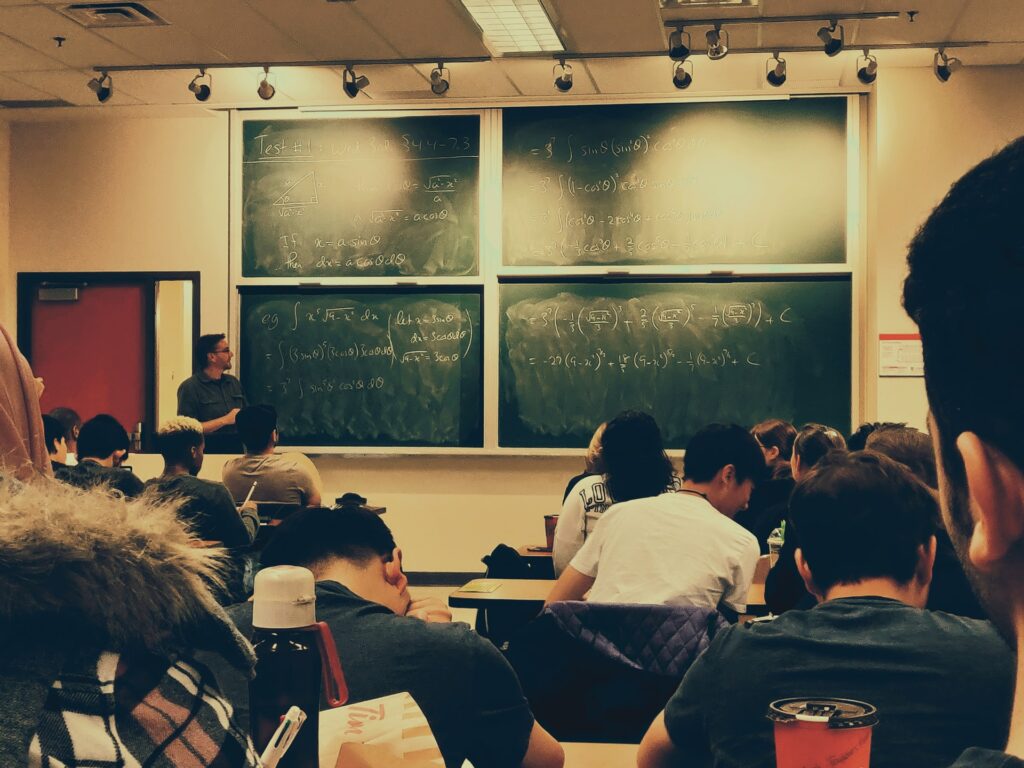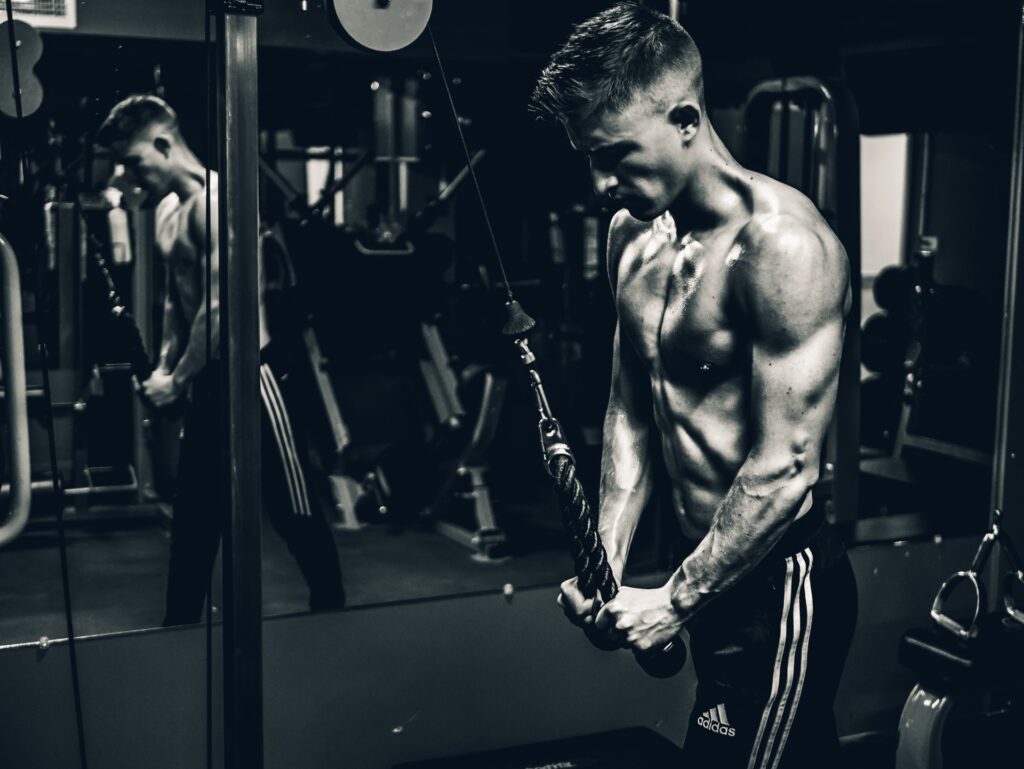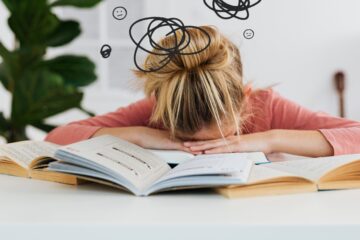What happens during a Concussion?
Concussions are a type of traumatic brain injury (TBI). A blow to the head or jolt of the body can cause the brain to move within the skull. The brain is not the solid organ like many people believe. The brain has a jello-like consistency and is floating in fluid. As a result, the brain can hit the skull or distort causing chemical changes. (Concussions are no longer graded, despite popular belief).

What are the symptoms of concussions?
Concussion symptoms vary depending on the area(s) of the brain that can be affected. The most common symptoms are:
- Headache
- Clumsiness
- Loss of Balance
- Personality Changes
- Sluggish Responses
- Difficulty focusing
- Nausea/Vomiting
- Sensitivity to light/noise
- Confusion
- Loss of memory (prior to or after injury)
Immediate Care for concussions
The first step to managing a concussion is to remove the athlete from activity immediately. While this sounds simple, it can often be more challenging due to an often delayed presentation of more dramatic or obvious symptoms. More in-depth testing must be done to rule out a concussion and return an athlete to participation.
After the concussion is confirmed the athlete will begin a care and return to play protocol. Historically, patients were “cocooned,” meaning they were put in monitored isolation to reduce stimulation in the brain (no school or work, dark/quiet rooms, etc). Today, research has shown this method can actually delay improvement and prolong symptoms if implemented for too long. Ideally, a brief period of isolation and rest should not last more than 1-3 days for adults.
Step 1: Return to Daily Activity
First, a patient needs to be able to return to their daily life except for physical exertion without increasing symptoms. For most people, this is returning to school or work. (Healthcare providers can provide medical excuses for absences due to concussions or to provide accommodations as needed). Light walking, stationary bike, and stretching are acceptable at this phase if symptoms do not increase. If symptoms do not return for 24 hours the patient may progress to Step 2.

Step 2: Light Activity
Next, light aerobic activity is started. Aerobic activity should only raise a patient’s heart rate up to 70% of their maximum. [220-age = maximum HR]. Initially, aerobic exercise sessions will last 5-10 minutes and should not produce symptoms. Weight lifting is not permitted in Step 2. If symptoms do not return for 24 hours the patient may progress to Step 3.
Step 3: Moderate Activity
Moderate activity is a vague step that often requires the most supervision because activity is a progression from Step 2 but is not maximum effort. Generally, it is safe to increase activity to allow for more head movement – jogging, light weight lifting, etc. For student-athletes, this is when the expertise of, and relationships with, their Athletic Trainer (AT) is crucial. Athletic Trainers almost always have the most contact with athletes and know their personalities/tendencies. That knowledge allows ATs to tailor recovery programs much more successfully than a removed provider (DC, MD, DO, NP etc). If symptoms do not return for 24 hours the patient may progress to Step 4.
Step 4: High Intensity, Non-contact
High intensity exercise includes sport-specific drills, running/sprinting, and weightlifting. Sports drills must remain non-contact to prevent the possibility of a secondary injury while the recovery is still in progress. If symptoms do not return for 24 hours the patient may progress to Step 5.

Step 5: Full-Contact Practice
Next, an athlete may return to full participation. Full practice participation is distinguished from competition due to several factors:
- Increased rest time between drills/plays
- Decreased adrenaline and symptoms being masked
- Intensity is often lower against teammates than opponents
If symptoms do not return for 24 hours the patient may progress to Step 6.
Step 6: Competition
Finally, an athlete can return to full, unrestricted competition. If symptoms do not return for 24 hours the patient is considered fully recovered from the concussion. There will also be additional testing required to reach competition (comparison to pre-season concussion testing, computerized testing, cognitive testing, balance tests etc).
What happens if concussion symptoms return?
Throughout each step, there is a possibility that symptoms will return. In the past, this would have reset the entire program. Today, any increase at a step will require a drop to the previous step until symptoms resolve for 24 hours.

What happens if I get a second concussion before recovering from the first?
Concussions have received a lot of attention over the last 10-20 years, particularly due to their long-term effects. Cognitive decline, mood swings, suicidal thoughts, and premature deaths are well documented. However, the short-term effects of concussions are no less concerning.
Second Impact Syndrome occurs when a concussion occurs before the first concussion has healed. Much like other tissues, a secondary injury takes far less force than the original. (Imagine spraining your ankle – it would take much less force to re-injure that area). This can occur within minutes, hours, or even weeks following the initial concussion.
As a result, the brain can not regulate the amount of blood it is receiving and the skull begins to fill. Within 3-5 minutes, the pressure within the skull compresses the brain stem leading to unconsciousness, dilated pupils, respiratory failure, and death. The mortality rate for second impact syndrome is 50%. In many cases, an athlete may be walking toward or be on the sidelines when they collapse.
Final Thoughts
The days of head injuries being “your bell was rung” or being told to “tough it out” are over. We have seen more than enough instances of untreated head and brain injuries leading to terrible outcomes and premature deaths. The short and long term effects of concussions are too damaging to allow participation. While many providers are branded “the bad guy” for withholding athletes, we are willing to bear that burden as advocates for our patients and athletes.

